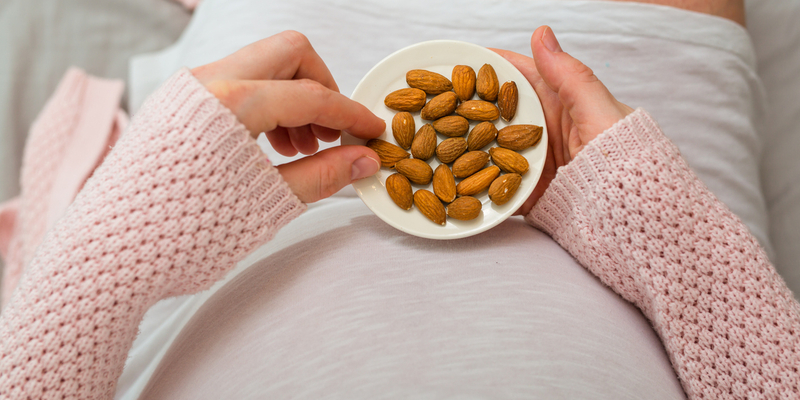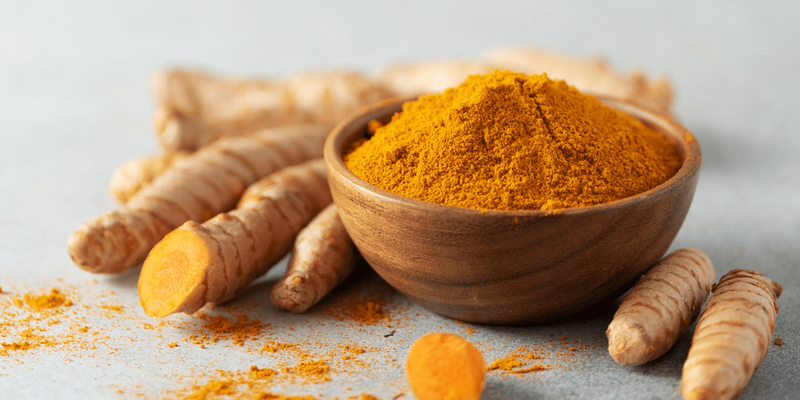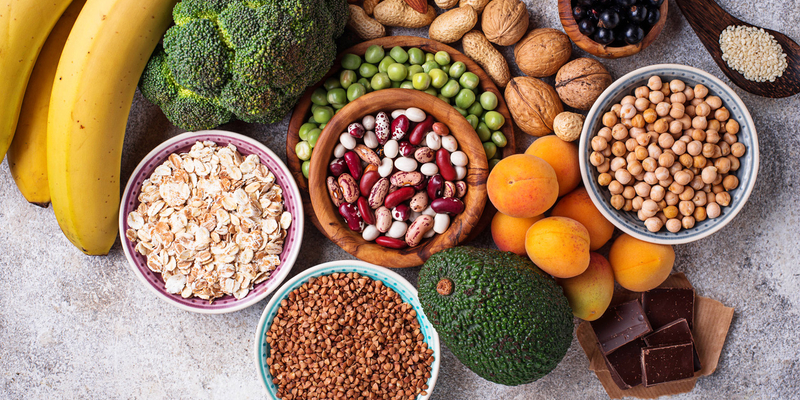
Food is fuel – what is healthy eating?
The Basics of Healthy Eating
In short, the foundation of a healthy diet — and you might have guessed it — is a varied diet rich in unprocessed foods. A diet that focuses not so much on the number of calories, but on achieving the right balance of macro and micronutrients from a variety of wholesome, fresh sources.
What are Macro and Micronutrients?
Macronutrients
Macronutrients are nutrients that our bodies need in large amounts for energy, growth, repair, and regulation of bodily processes. There are three main macronutrients: proteins, carbohydrates, and fats.
Micronutrients
Micronutrients are nutrients that our bodies need in smaller amounts. The key types of micronutrients are vitamins, minerals, and trace elements.
How Varied is Your Diet Really?
When we talk about a varied diet, we mean a diet that includes sufficient variety within different food groups. No single food contains all the nutrients we need. This means we must vary our diet to provide our bodies with a good balance of macro and micronutrients.
The Western diet is generally not very varied. An average dietary routine might include a bowl of oatmeal or yoghurt with muesli for breakfast, a few slices of brown bread with cheese or chicken breast for lunch, and potatoes or rice with some vegetables and a piece of chicken, fish, or a meat substitute for dinner.
When you add this up, it amounts to about 20 different foods per week on average. Something to keep in mind is that you cannot count bread, crackers, pasta, and muesli as different foods because they all contain wheat as a base ingredient.
Ready to truly bring variety into your dietary routine? Then try to incorporate 30 different plant-based products (vegetables, fruits, fresh herbs, mushrooms, (pseudo)grains, nuts, seeds) and 10 different sources of complete proteins (meat, poultry, pasture eggs, tofu, fish, legumes) into your diet each week. Does this sound like a lot? Try planning your meals two weeks in advance and aim for as much variety as possible. You might discover some delicious (forgotten) vegetable and herb combinations.
Did you know that our distant ancestors ate about 3000 different foods per year? That equates to over 60 different products per week. As hunter-gatherers, we were dependent on what was available in our environment. This varied greatly from week to week and season to season, leading to this high level of food variety.
Nutrition at the Cellular Level
In orthomolecular medicine, healthy nutrition forms the foundation of a healthy body. Nutrition not only provides our bodies with energy, but also supplies all the nutrients that contribute to a good alignment of molecules within our bodies. When all molecules, cells, and tissues are well-nourished, our bodies can function optimally.
What is Orthomolecular Medicine?
The term ‘orthomolecular’ was introduced in 1968 by Professor and Nobel Prize winner Linus Pauling, the founder of orthomolecular medicine. The word orthomolecular comes from the Greek word orthos, meaning ‘correct’ or ‘right’, and molecular refers to the molecules from which all substances are built. In orthomolecular medicine, we aim to provide the body with the right substances (molecules) in optimal amounts to maintain or restore health.
Upgrade Your Dietary Routine According to Orthomolecular Medicine
- Eat as purely, unprocessed, and varied as possible and avoid pre-packaged and ready-made products.
- Eat seasonally and try to shop as locally as possible.
- Aim for a maximum of 3 to 4 eating occasions per day, including snacks and calorie-containing drinks like a cappuccino or smoothie. Preferably drink your cappuccino directly after a meal or snack to smartly combine eating occasions. This way, you limit the number of blood sugar spikes and avoid unnecessarily burdening your digestion.
- Try to eat at least 400-500 grams of vegetables and 2 servings of fruit per day.
- Eat your fruit in its original form, so where possible with the skin and not as juice. This way, you get the fibres and are encouraged to chew well. This supports your digestion. Preferably buy organic (biodynamic) fruit to avoid unnecessary pesticides.
- Ensure that you get enough complete proteins and vegetables with each meal. Proteins are considered complete when they contain sufficient amounts of all nine essential amino acids. Sources of complete proteins include: pasture eggs, legumes, tempeh, hemp seeds, chia seeds, organic raw or fermented dairy, fish, poultry, and grass-fed meat from organic sources.
- Try to consume about 2 tablespoons of good fats daily. Healthy fats can be found in: avocados, raw nuts and seeds, smaller fatty fish, ghee (clarified butter), cold-pressed extra virgin olive oil, coconut oil, pasture eggs, meat, and full-fat (raw) dairy from organic and grass-fed animals.
- Do not prepare your meals on high heat. Frying and sautéing are best done in a fat with a high smoke point, such as coconut oil, ghee, or beef tallow.
- Where possible, buy your groceries organically (biodynamic). A good guideline is the annual ‘Dirty Dozen & Clean Fifteen’ list from the Environmental Working Group (EWG). The clean fifteen are clean enough to buy conventionally, while the dirty dozen are best bought organically.
For a balanced meal, you can use the following layout as a guide: 1/2 plate of vegetables, 1/4 plate of complete proteins, 1/4 plate of complex carbohydrates, 0.5 tablespoon of healthy fats.
Why Grass-Fed Animal Products?
The same applies to animals: you are what you eat. If that involves a monotonous diet of grains, soy, and corn, it affects the composition of the meat, dairy, and eggs. For instance, what a cow eats significantly influences the fatty acid composition of the beef. Grass-fed beef contains up to 5 times more omega-3 than beef from grain-fed cattle in industrial farming. Additionally, meat from grass-fed animals is richer in vitamins A and E.
Optimise Your Routines with Vitamins
Supplements certainly have a place within a healthy diet and can absolutely support your health and healthy routines. At the end of the day, we are all human and everyone experiences periods when they could use a bit more support. For example, during stressful periods, we have a higher need for magnesium, B vitamins, and vitamin C. Moreover, everyone has their preferences, and not everyone likes fish or feels comfortable eating animal products. In such cases, supplementing omega-3 and vitamin B12 is advisable.
We hope, of course, that after reading this article, you have been inspired to optimise your dietary routine where necessary and further support your health. Prefer to consult or need personal advice? Our health coaches are ready to assist you in our stores or you can ask your question via the online chat on this website.
Sources
- McAfee, A. J., McSorley, E. M., Cuskelly, G. J., Fearon, A. M., Moss, B. W., Beattie, J. A. M., ... & Strain, J. J. (2011). Red meat from animals offered a grass diet increases plasma and platelet n-3 PUFA in healthy consumers. British Journal of Nutrition, 105(1), 80-89.
- Daley, C. A., Abbott, A., Doyle, P. S., Nader, G. A., & Larson, S. (2010). A review of fatty acid profiles and antioxidant content in grass-fed and grain-fed beef. Nutrition journal, 9, 10. https://doi.org/10.1186/1475-2891-9-10
- Descalzo, A. M., Rossetti, L., Grigioni, G., Irurueta, M., Sancho, A. M., Carrete, J., & Pensel, N. A. (2007). Antioxidant status and odour profile in fresh beef from pasture or grain-fed cattle. Meat Science, 75(2), 299-307.
- Lopresti A. L. (2020). The Effects of Psychological and Environmental Stress on Micronutrient Concentrations in the Body: A Review of the Evidence. Advances in nutrition (Bethesda, Md.), 11(1), 103–112.







